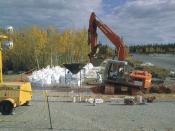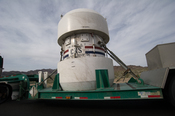Nuclear Waste
Nuclear Waste
Nuclear energy is an important alternative power source that parts of the world may need;
however, the dangerous result of it is nuclear waste. Nuclear waste can kill and harm life on Earth even
billions of years after it is produced.
Nuclear waste is the product of used nuclear fuel. Much of this fuel is produced every day.
Some countries, such as France and Japan, rely on nuclear energy because they have limited fossil fuels.
This may add to nuclear power being seven percent of all energy used. There are over 400 nuclear
power plants in the world, and in the making of nuclear energy, waste is produced. Powered by steam,
nuclear reactors control the production of nuclear energy, a process known as fission. Fission occurs
when a neutron collides with an atom, such as uranium, and it splits, releasing energy. This causes the
molecules to release more neutrons. When they collide with other atoms, they split and release more
energy, causing a chain reaction. This happens quickly and releases a large amount of energy, so it must
take place in fuel rods where it is controlled. This process causes the elements in the nuclear fuel to
break down into different forms of the element, called isotopes. Some of the isotopes begin to decay
and become radioactive (Scarborough). The time it takes for a specific isotope to lose half of its
radioactivity is called its halfÂlife. HalfÂlives can continue from microseconds to billions of years. In
addition to creating nuclear energy, power plants have found ways to reuse waste so it is usable again.
This is called reprocessing.
Nuclear waste is a result of fission at nuclear power plants. It is mainly composed of the
elements uranium and radon because they split easily. When the nuclear...


